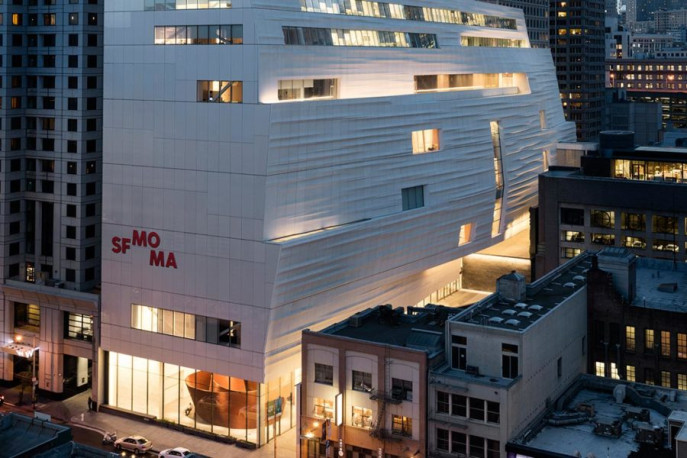
by: Ellen C. Caldwell
for JSTOR Daily
San Francisco Museum of Modern Art (SFMOMA) has opened its newly expanded museum, designed by the architecture firm Snøhetta to celebrate the museum’s 75th anniversary. Included in the redesign are technological innovations—app-based audio tours, virtual maps, and curated online exhibitions—as well as architectural ones—namely, an exponential expansion aiming to integrate a new 10-story gallery with the original 1995 Mario Botta building.
Why is this renovation significant? Does this technology separate us from the art itself, while diminishing the need for physical museum spaces, or does it draw us in? Susanna Sirefmananalyzes modern international museums in terms of their physical significance and location—whether the museum is easily in the city, as part of a museum row or standing alone. She also looks at the scale of the space, the collection itself, the museum’s distinct programming, and the technology implementation. And finally, she considers inhabitation—or the “relationship between outside and inside” and the “spatial definition” of the museum itself.Ultimately Sirefman argues that modern museum architecture is “is both formed by culture and culturally formative.”
In 1999, Sirefman considered the role of technology within the modern museum. Foreseeing its lasting (and growing) power in museum settings, her analysis still holds true over 15 years later…
